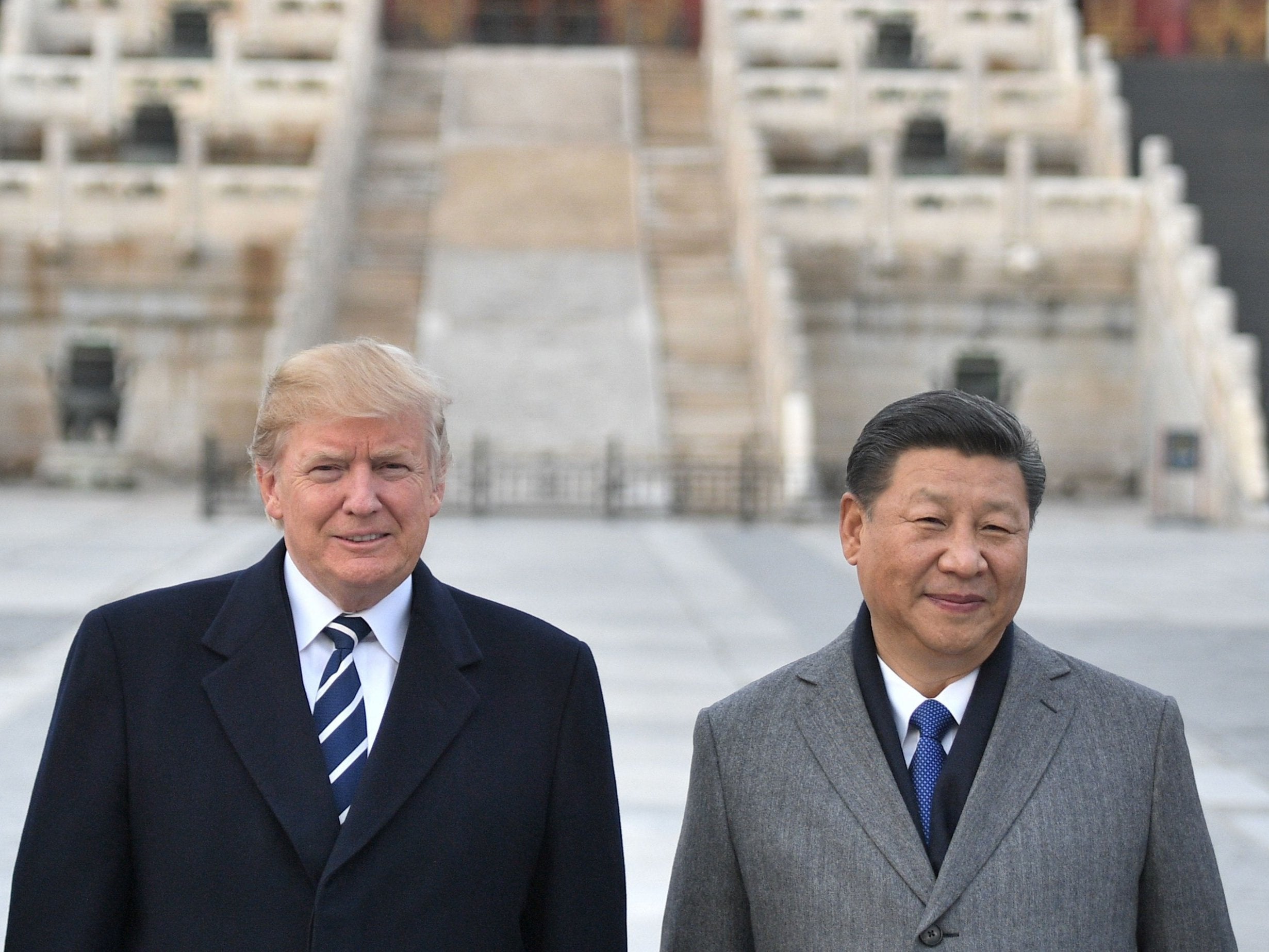US-China trade war: Here’s what the Trump-Xi talks mean and how we got here
Mr Trump says he will impose more tariffs if the negotiations between Washington and Beijing fail

Donald Trump has suggested he has no fear of imposing more tariffs on China at the end of a 90-day ceasefire in their ongoing trade war that has disrupted markets and kept investors up at night over the past year.
With just a month until yet another planned tariff increase, Donald Trump and his Chinese counterpart Xi Jinping agreed over dinner in Argentina at the annual G20 summit last week to a delay on any tax increases in hopes a lasting deal could be negotiated in that time.
Mr Trump said via Twitter on Tuesday that negotiations had started, but if no "real deal" with Beijing could be found he would impose more tariffs. hr then called himself "tariff man".
It remains unclear how much headway has actually been made in the negotiations, and the messages coming out of Washington and Beijing are anything but coordinated.
While Mr Trump said on Monday morning he managed to convince China to reduce tariffs on US car imports — a reduction that would be much needed good news for the American president after GM laid off thousands of workers last month — China has been much less straightforward on the topic, and has refused to confirm it had reduced its 40 per cent duty.
Whether the two countries can find a lasting truce and end the trade war that has simmered over the past year is anyone’s guess, but the two presidents have said they have instructed their economic teams to intensify talks.
Here is what you need to know about the trade war, how we got here, and what that means going forward.
Why are we seeing these tariffs now?
Mr Trump made China a major bogeyman during his 2016 campaign, insisting the country was taking advantage of the United States when it comes to trade, and what we are seeing is him making good on his promise to be strong on trade.
The tariffs we have seen in the past year come after an investigation by the Office of the United States Trade Representative (USTR) that “determined that numerous acts, policies, and practices of the government of China related to technology transfer, intellectual property, and innovation are unreasonable or discriminatory, and burden or restrict US commerce”.
More specifically, the Trump administration and the USTR report allege China distorts markets and has unfair intellectual property policies that harm American businesses.
The US, essentially, contends China has implemented unfair trading policies by forcing US companies to engage in joint ventures with Chinese companies to do business in the country, which opens the door for those companies to use, improve, or replicate US technologies.
In addition, the US contends the Chinese government does not adequately enforce or recognise US patents and the country discriminates against foreign technologies.
Those policies can have a pretty big impact, too, with the US losing out on an estimated $225bn (£177bn) to $500bn (£393bn) annually from intellectual property theft, according to the seven-month investigation by the USTR.
How big are these tariffs, and when did this start?
The most recent round of tariffs in September saw 10 per cent duties placed on an additional $200bn (£157bn) in Chinese imports.
A USTR notice announcing those tariffs included a pledge to increase that rate to 25 per cent on 1 January, which has been temporarily halted as a result of the talks in Argentina.

Those tariffs came on top of taxes on $50bn (£39bn) worth of goods that were imposed in July, and mostly covered high tech products. The USTR also announced in January a 30 per cent tax on Chinese made solar panels, and 20 per cent on Chinese washing machines brought into the US for sale.
The Chinese have not sat idly by, however, and has imposed tariffs on $110bn (£86bn) of US goods that impact industries that could threaten Mr Trump’s political support in the US. They have also threatened “qualitative measures” that could hurt US businesses operating in China.
What goods are being taxed?
The tariffs the US imposed on Chinese goods cover thousands of predominantly high tech goods. Those tariffs have impacted the price of TVs, solar panels, cosmetics, electronics, solar panels, beer, cars, and even clothing in the US.
Several major US retailers — including Walmart, Gap, and Coca-Cola — have announced the tariffs could force them to raise prices.
China, meanwhile, has imposed tariffs on goods like American aeroplanes, soybeans, whiskey, fruits and nuts, beer, and wines.

What comes next?
Following the agreement between Mr Trump and Mr Xi in Buenos Aires, the two countries have a 90-day period to find a lasting solution their disagreements.
Both sides have previously indicated that they have little interest in giving up any ground they do not have to, and US economic officials have repeatedly said that they believe the US economy is in a stronger place than China’s. Those sorts of messages could indicate the US government has little intention of backing down at any time in the near future, and things could get a lot worse before anything gets better.
Regardless of the outcome of negotiations in the next 90 days, American consumers can likely look forward to higher prices as they finish up holiday shopping this month.
Join our commenting forum
Join thought-provoking conversations, follow other Independent readers and see their replies
Comments
Bookmark popover
Removed from bookmarks